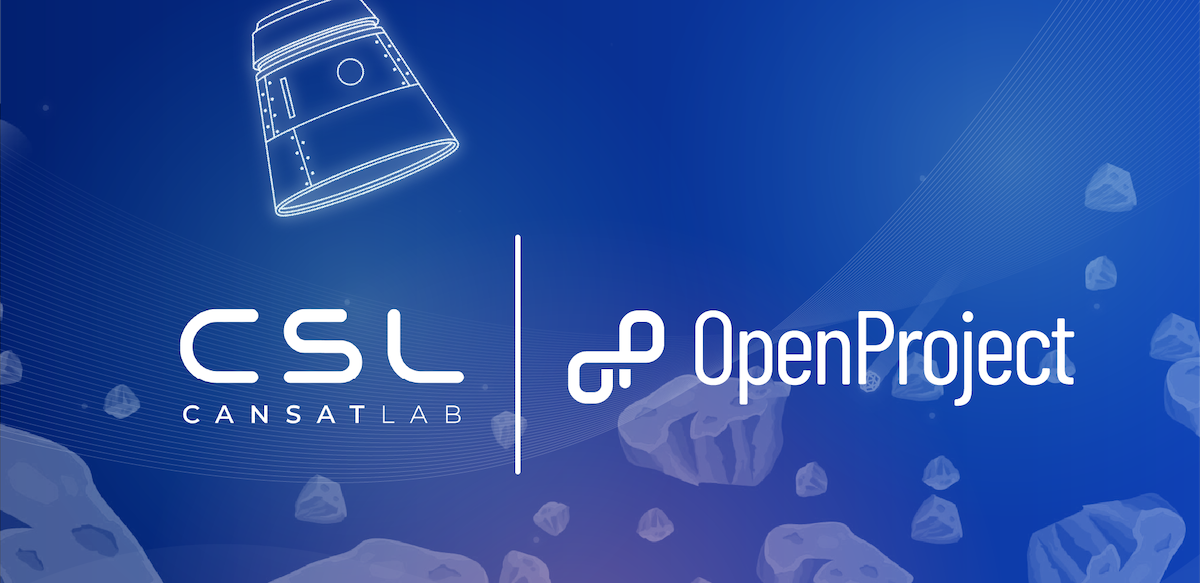CanSatLab: How to build a real satellite from a can with OpenProject
Students across Europe are building satellites in handy beverage can format – ESA calls the program CanSat, a competition for can satellites. At the forefront of participants from the USA, Germany, and India are Hungary, where a total of 84 teams are participating – and relying on OpenProject. The record participation in ESA’s student competition is a great success for the small country, which is now almost catching up with Germany.
Read this case study to learn more about this fascinating project.
ESA asks students to develop a simulation of a satellite that fits into a beverage can
The task is outstanding: Develop a simulation of a satellite that fits into a standard beverage can – the Student Spacelab Network (SSN) was created to support ESA’s CanSat Competition. The teams need OpenProject for the organization.
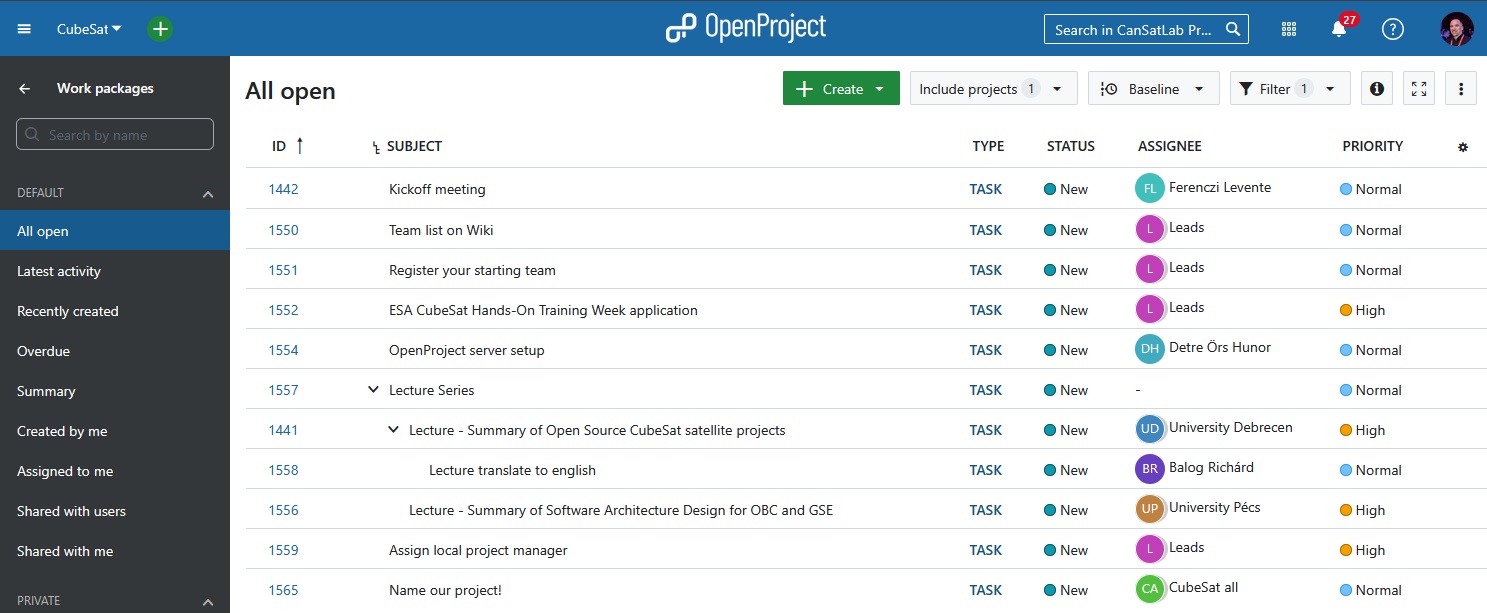
Image: In the CanSat Lab and Student Spacelab Network, over 80 groups use OpenProject to organize themselves to build satellites together. (Source: SSN)
And it sounds simple: The ESA project requires “the simulation of a real satellite”, including all common subsystems, all in the confined space of a small 0.33-liter soda can.
Hungarian students plan, build, and launch satellites
The can must contain a power supply, sensors, and a communication system. In the final test, the small unit must survive a rocket launch that carries it almost a kilometer high into the atmosphere, where a scientific experiment takes place. Alternatively, the cans may also be launched from a platform, drone, or balloon – but a safe landing is always a must so that the data from the experiment can be evaluated.
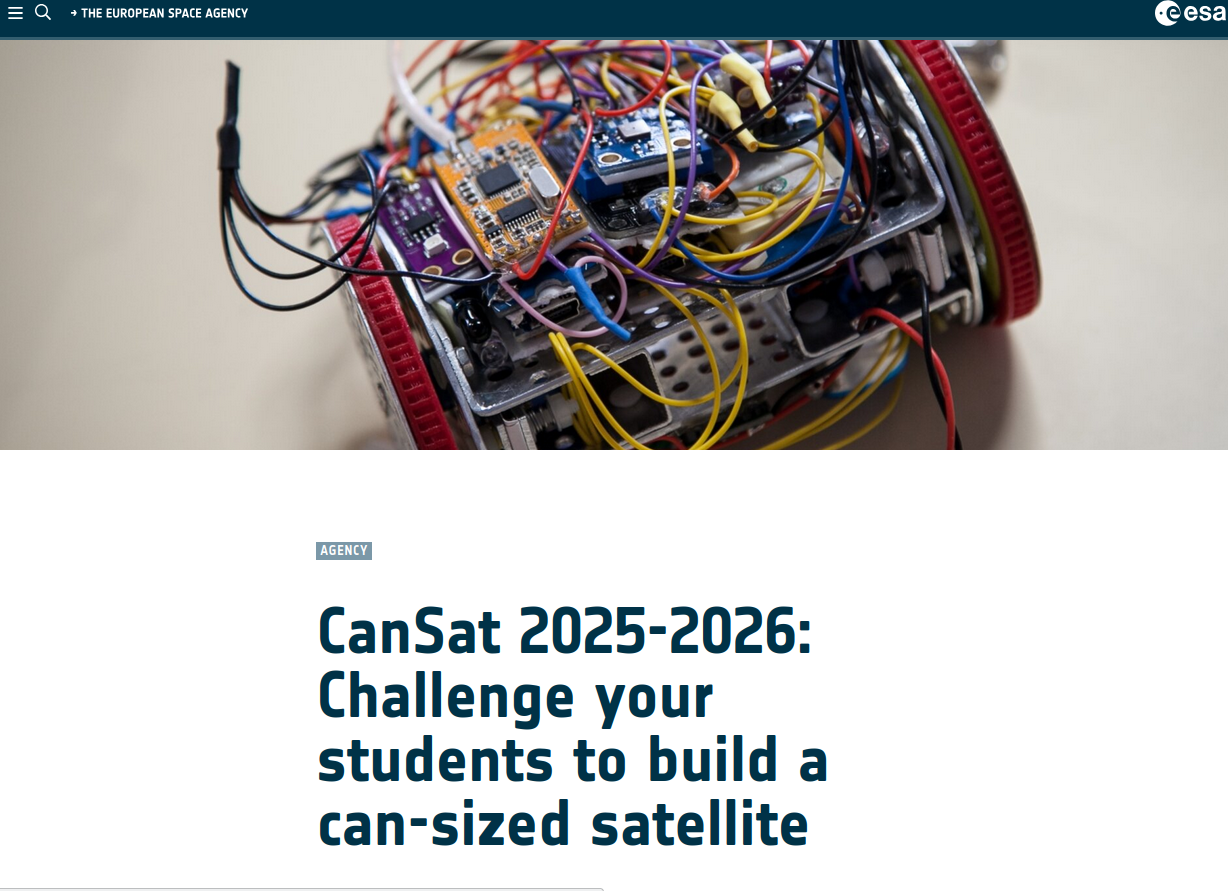
Image: “Challenge your students to build a can-sized satellite”: Under this motto, ESA is calling on students and scientists to nurture the next generation. (Source: ESA)
Required experiments for CanSat
As far as the experiments are concerned, one requirement is to measure the air temperature and air pressure once per second, including transmission via radio. However, the components of the second experiment are left entirely up to the student team and their imagination – they range from measuring data during descent to launching a mini rover from the can.
National competitions have been held since 2025, with Hungarian students in particular excelling thanks to their extremely high level of participation.
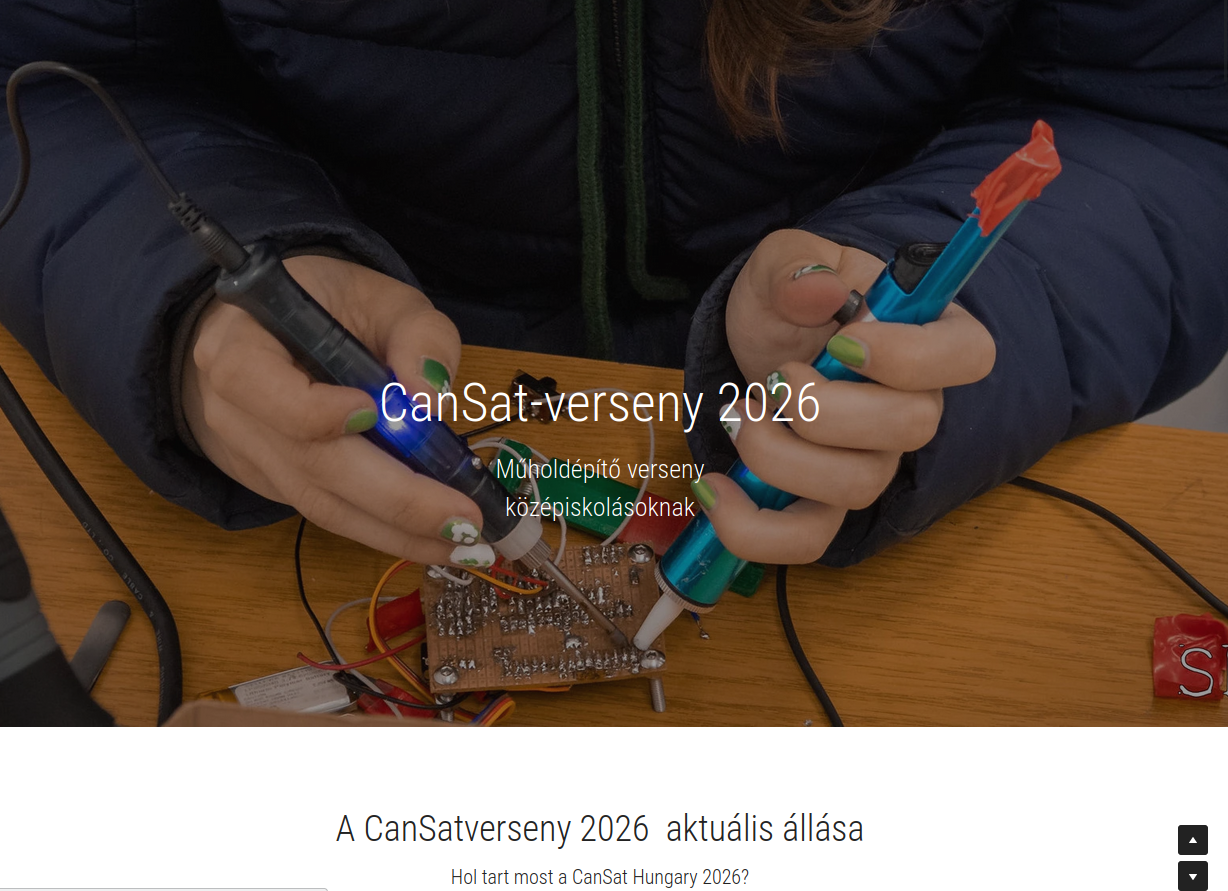
Image: Many students take part in national satellite construction competitions such as this one here in Hungary every year. (Source: CanSat)
At the same time, there is a great deal of pride in this first Hungarian non-profit laboratory network, which offers curious, motivated teenagers the opportunity to get involved in space travel and work with high-tech equipment. Dreams come true in a country with a long tradition of craftsmanship and technology – who would have thought they could simply get involved in a space project?
Successful competition for young talent – everyone wants to go into space
This works thanks to good planning: building mini-satellites requires laboratories such as those found at universities or well-equipped companies. The aim of the CSL is to provide the basic equipment that students need to build the satellites, such as 3D printers and soldering stations. But that’s not all: robot-controlled production lines, metal 3D printers, laser cutters, CNC milling machines, and much more are also available throughout Hungary. The photos from the CanSatLab Finals 2024 show the teams in the final competition with the rockets that launch the small satellites or how they glide safely back to the ground on parachutes.
Fourteen universities and twenty companies are on board in Hungary, and the infrastructure at over 40 locations is completely accessible remotely. The goal is to always have specialists on site who can provide support with their expertise on the machines and also with satellite construction. If the desired funding is secured (and as of October 2025, it looks like there will even be 80 locations), in addition to the mentors, there will also be online help and workshops, hybrid presentations, and further training for both students and mentors.
The ESA invites the national winners to “Space Engineer for a Day”, which took place just a few weeks ago in Leiden, Netherlands. And students can submit their work as final theses, for example.
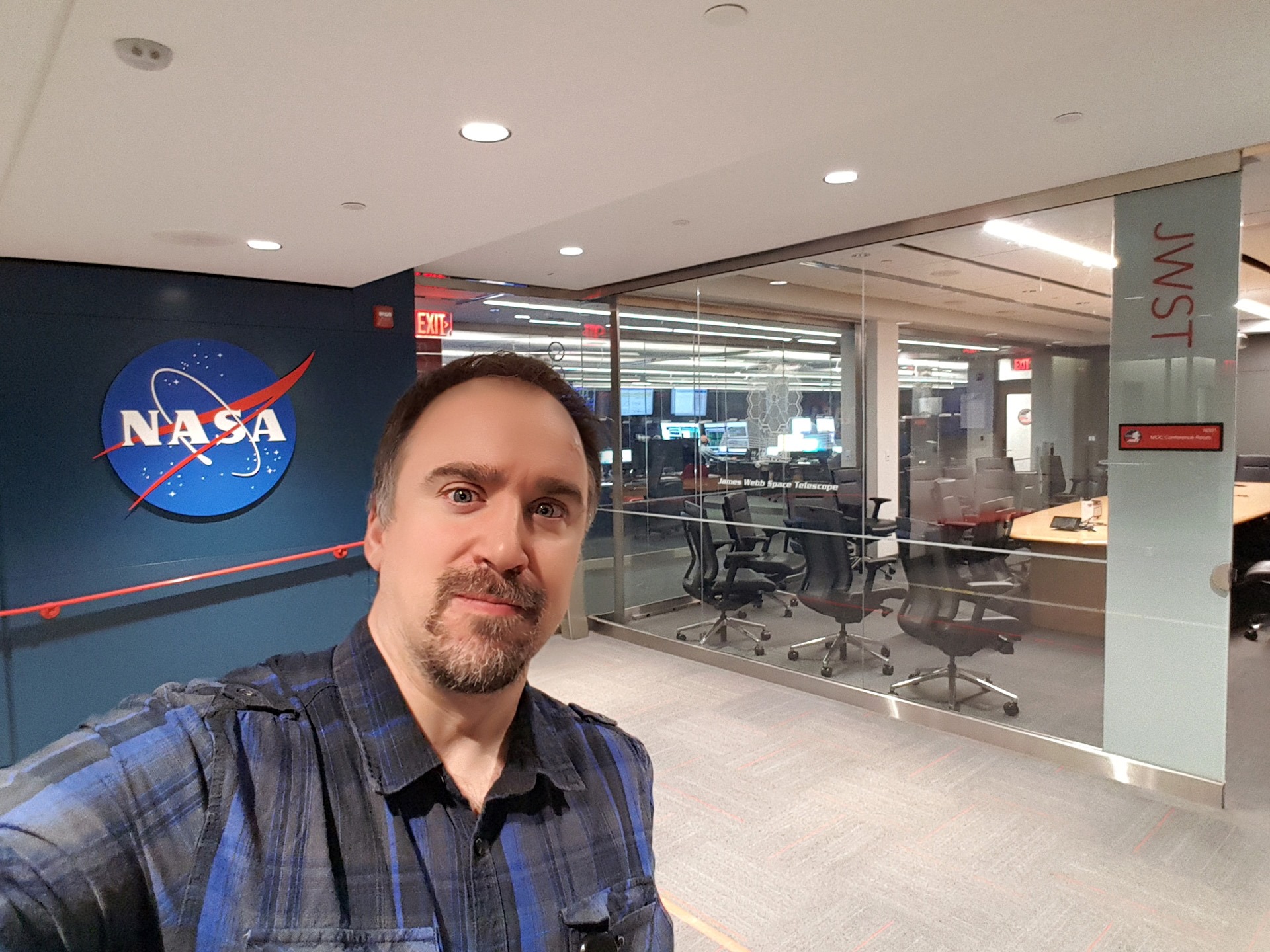
Image: Örs Hunor Detre, organizer of the Student Spacelab Network SSN, a project of ESA’s CanSat competition. Source: CanSatLab
Building on the experience of the James Webb Space Telescope
The mastermind behind the Hungarian CanSatLabs is Örs Hunor Detre, who himself worked for ESA for many years. Örs worked on the Nancy Grace Roman Space Telescope RST from the outset, having previously held a position of responsibility at the James Webb Space Telescope JWST and worked at the Max Planck Institute for Astronomy in Heidelberg from 2008 to 2023. For the JWST, he supervised the Mid-Infrared Instrument MIRI as European Electrical Lead and Mechanism Subject Matter Expert, and he enjoys showing photos from his work with NASA and ESA experts in Europe and the USA.
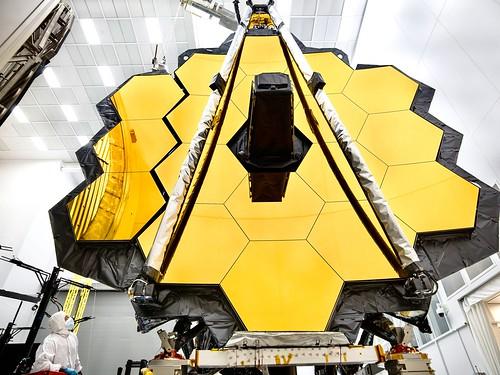
Image: The James Webb Space Telescope is the largest of its kind in space. Örs Hunor Detre had the opportunity to work on it and was responsible for MIRI, the Mid-Infrared Instrument. (Source: NASA, flickr)
“Space projects are just cool; they can motivate and inspire people, says Detre, “and that’s especially important with students.”
The Hungarian learned “how an institute should function” at ESA and NASA and has clear ideas about where the journey should take him. “Everyone wants the NASA badge, it’s cool, and telling kids that they can get it too is great.” Astronomy is a wonderful introduction to astrophysics, and that’s where you can really let your imagination run wild, “because all the sciences are represented there”, he enthuses.
Future plans for CanSat
Next year, the project is to be expanded even further, with a self-imposed goal of creating a Hungarian satellite constellation consisting of more than four CubeSats – if funding is secured.
The aim is then to overtake Germany, which currently ranks first in terms of participants. “Our goal is for our non-profit organization to use space research to get high school students excited about STEM subjects (science, technology, engineering, and mathematics). To achieve this, we offer technical and environmental support and collaborate with universities, experts, and space research companies,” explains Detre.
Ten universities, 150 employees, over 40 locations networked with OpenProject
To make this plan a reality, ten universities with around 150 employees have joined forces and set up a professional project management system, OpenProject, of course. “We started with the Community version on one server for all aspects, across eight countries, until we realized we needed support.” Because funding was limited, OpenProject supported CanSatLab with the Enterprise version.
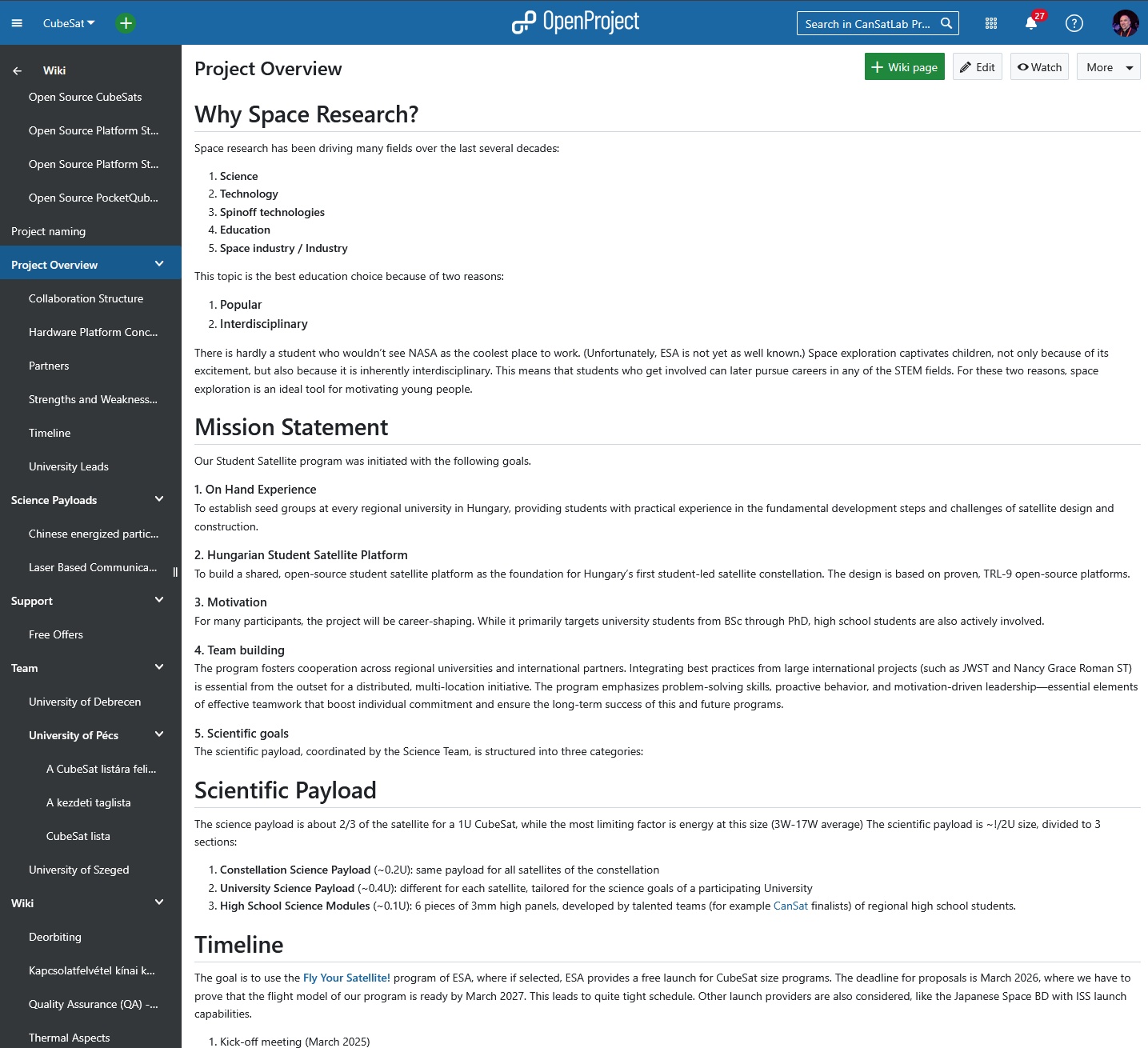
Image: The scientists at SSN / CanSatLab led by Detre now use many features in OpenProject, from documentation to in-depth project management.
Read more case studies on aerospace projects managed with OpenProject.
